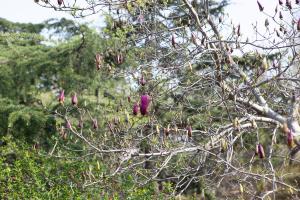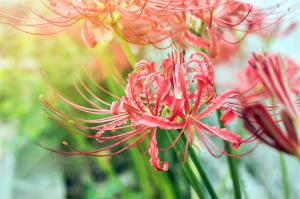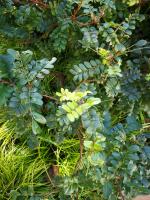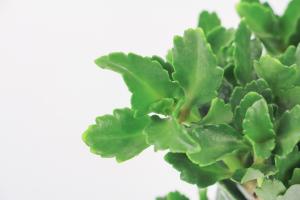A Colorful Plant Organism that Grows on Tree Trunks
Have you ever gone on a hike and noticed bright bursts of color growing on the trunks of trees? These are likely lichens, a unique plant organism that is actually a symbiotic relationship between a fungus and an alga or cyanobacterium. Lichens can vary in color, from vibrant yellows and oranges to deep blues and greens.
The Science Behind Lichens
Lichens are fascinating organisms that have long perplexed scientists. They were once thought to be a type of fungus, but it is now known that they are actually composed of two distinct organisms. The fungus component provides a network of filaments that protects the alga or cyanobacterium within it. The alga or cyanobacterium, in turn, produces sugars through photosynthesis that the fungus uses for energy.
The Diversity of Lichens
There are over 20,000 different species of lichens found all over the world. They can grow on a variety of surfaces, including rock faces and soil, but are most commonly found growing on the trunks of trees. Lichens can be classified as foliose, crustose, or fruticose, depending on their growth pattern. Foliose lichens have a leafy appearance, crustose lichens form a crust over the substrate, and fruticose lichens have a branching or bushy growth pattern.
Importance of Lichens in Ecosystems
Lichens play an important role in many ecosystems. They are often the first organisms to colonize a new habitat, such as a rock face or barren soil, and are able to survive in extreme environments like the cold, dry tundra. Lichens also provide a valuable food source for a variety of organisms, including reindeer and caribou in the arctic, and are even used in traditional medicines.
The Threats Facing Lichens
Despite their important role in ecosystems, lichens are facing a number of threats. They are sensitive to changes in their environment, including pollution and climate change. In areas with high levels of air pollution, lichens may be unable to survive, and their presence or absence can be used as an indicator of air quality. Additionally, increased temperatures and reduced rainfall resulting from climate change can also impact lichen populations.
Conclusion
Lichens are an incredible example of the symbiotic relationships that exist in nature. Their diversity and importance in ecosystems make them an important subject of study for scientists. It is essential that we take steps to protect these organisms from the threats they are facing, ensuring that they continue to thrive and contribute to the health and wellbeing of our planet. Next time you come across colorful growths on a tree trunk, take a moment to appreciate the unique and fascinating lichens that call it home.

 how many times do yo...
how many times do yo... how many planted tre...
how many planted tre... how many pine trees ...
how many pine trees ... how many pecan trees...
how many pecan trees... how many plants comp...
how many plants comp... how many plants can ...
how many plants can ... how many plants and ...
how many plants and ... how many pepper plan...
how many pepper plan...
































